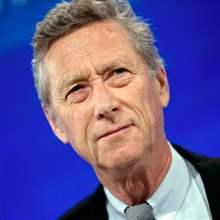The Brookings Institution is committed to quality, independence, and impact.
We are supported by a diverse array of funders. In line with our values and policies, each Brookings publication represents the sole views of its author(s).

Research
BPEA | 2005 No. 1
2005, No. 1
TWO MAIN FORCES underlie the large U.S. current account deficits of the
past decade. The first is an increase in U.S. demand for foreign goods,
partly due to relatively faster U.S. growth and partly to shifts in demand
away from U.S. goods toward foreign goods. The second is an increase in
foreign demand for U.S. assets, starting with high foreign private demand
for U.S. equities in the second half of the 1990s, and later shifting to
foreign private and then central bank demand for U.S. bonds in the
2000s. Both forces have contributed to steadily increasing current account
deficits since the mid-1990s, accompanied by a real dollar appreciation
until late 2001 and a real depreciation since. The depreciation accelerated
in late 2004, raising the issues of whether and how much more is to
come and, if so, against which currencies: the euro, the yen, or the Chinese
renminbi.